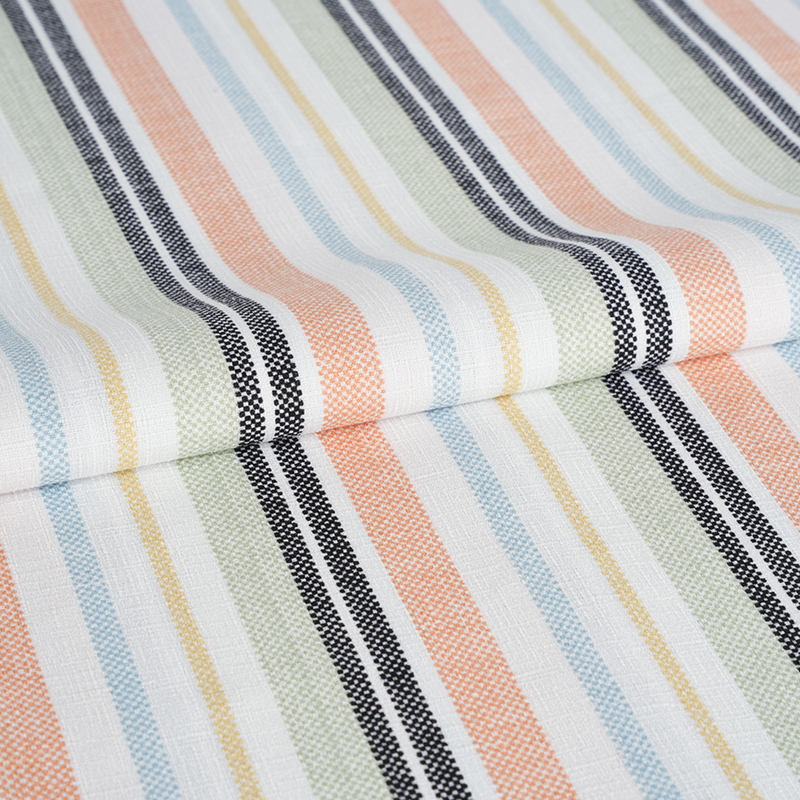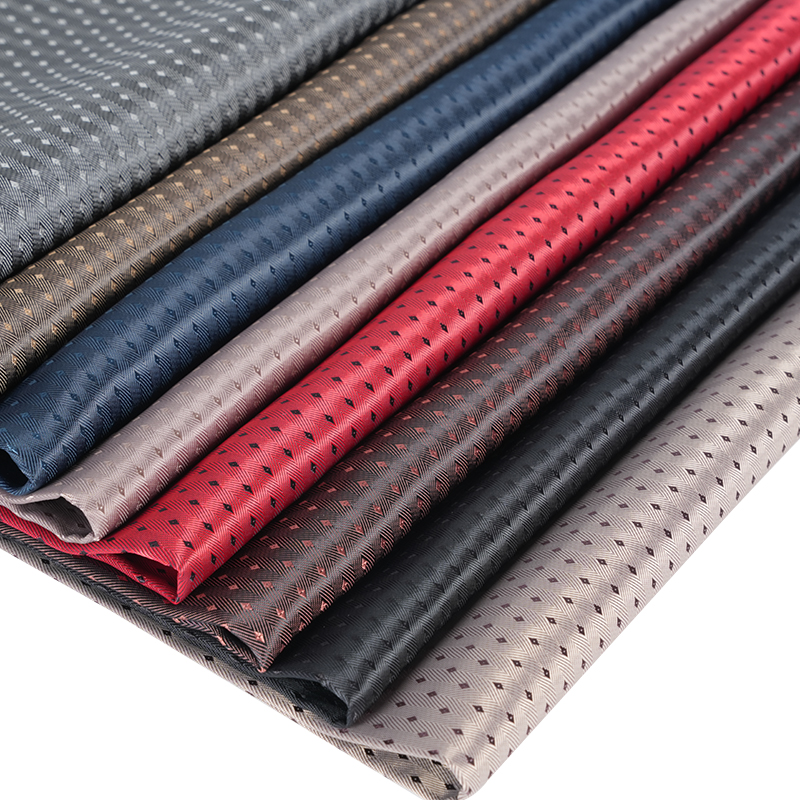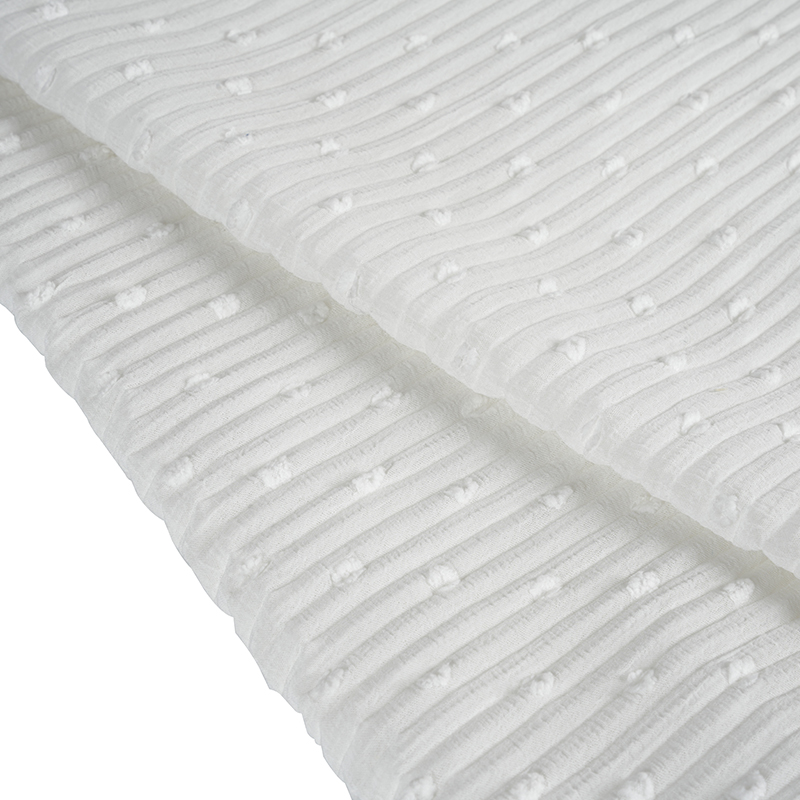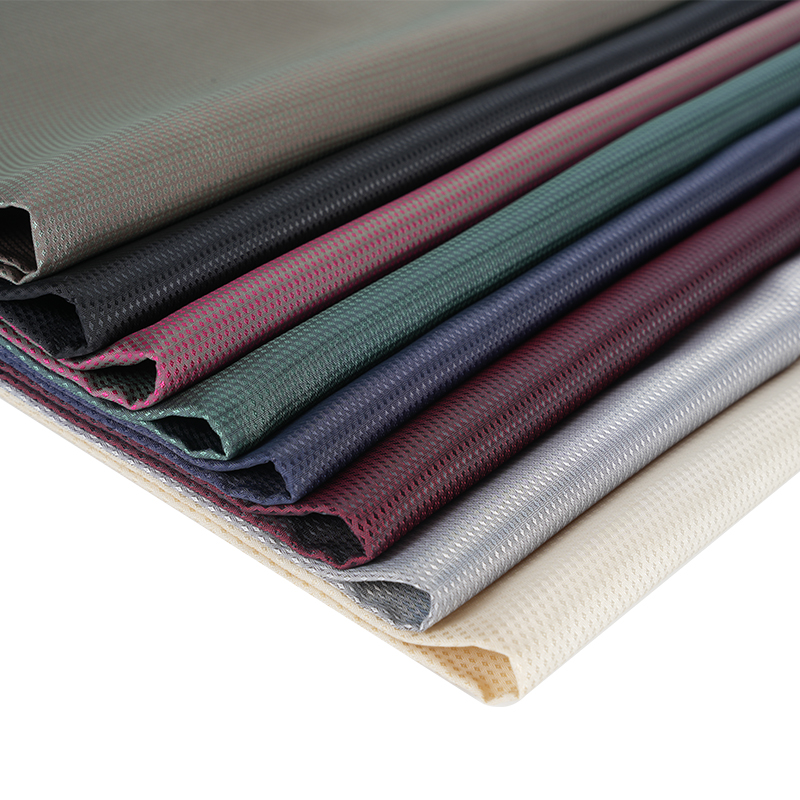Introduction to Chiffon Fabric
What is Chiffon?
Chiffon is a lightweight and sheer fabric widely recognized for its soft, flowing nature and delicate appearance. It is produced from various fibers including natural silk, synthetic polyester, and semi-synthetic rayon. Silk chiffon is known for its smooth texture and natural sheen, while polyester chiffon and rayon chiffon offer alternatives that are more cost-effective and easier to maintain. This fabric is commonly used in evening wear, blouses, scarves, and decorative textile applications. Chiffon material’s sheer quality allows for layering, creating volume and a sense of movement without adding substantial weight. Sewing chiffon requires careful attention due to its delicate weave, which can be prone to fraying or puckering if not handled properly.
History and Origin
The history of chiffon fabric can be traced back to the 18th century when it was first developed in France using silk fibers. Initially, chiffon became popular for its lightweight and flowing characteristics, which appealed to the fashion preferences of European women. Over time, the introduction of synthetic fibers like polyester allowed for broader production, making chiffon material accessible for everyday garments while maintaining its signature sheerness. The popularity of chiffon expanded globally as fashion trends evolved, and it became a common choice for formal attire, bridal wear, and evening dresses. Today, chiffon fabric is manufactured in multiple forms, including silk chiffon, polyester chiffon, and rayon chiffon, each serving different aesthetic and functional needs in fashion and textiles.
Key Characteristics: Lightweight, Sheer, and Flowing
Chiffon fabric is defined by its lightweight and translucent quality. Its fine weave creates a slightly textured surface, contributing to its distinctive appearance. The sheer nature of chiffon allows designers to layer it over other fabrics or combine multiple layers to create visually appealing designs. The flowing characteristic of chiffon fabric enhances drape and movement, giving garments a sense of softness and elegance. Chiffon material can also be easily dyed or printed, providing versatility for designers and hobbyists. A comparison of the common types of chiffon is presented in the table below:
| Type of Chiffon | Fiber Content | Characteristics | Common Uses |
|---|---|---|---|
| Silk Chiffon | Natural silk | Soft, smooth, lightweight, slightly lustrous | Evening gowns, scarves, high-end blouses |
| Polyester Chiffon | Synthetic polyester | Durable, affordable, drapes well | Dresses, skirts, decorative items |
| Rayon Chiffon | Semi-synthetic rayon | Soft, breathable, fluid drape | Blouses, flowing skirts, fashion accessories |
Uses and Applications
Chiffon fabric is highly valued in the fashion industry for applications where a light, flowing, and elegant appearance is desired. Designers use chiffon material in layered skirts, ruffled blouses, evening gowns, and bridal wear to take advantage of its sheer and draping qualities. Sheer fabric panels can be incorporated into dresses, adding dimension and texture while maintaining a sense of airiness. Chiffon is also widely used in scarves and accessories, where its soft and flowing texture complements various styling choices. Sewing chiffon requires skill due to its delicate weave, but it allows for creative expression in garment construction, including pleats, gathers, and overlays.
Sewing Chiffon
Sewing chiffon requires specialized techniques to manage its lightweight and delicate nature. Using fine needles, stabilizing the fabric with tissue or water-soluble stabilizers, and employing small stitches are common practices. Hemming chiffon may involve rolled hems or narrow binding to prevent fraying. When cutting chiffon fabric, it is recommended to use sharp scissors or rotary cutters and to avoid stretching the material. Sewing chiffon material successfully ensures that garments retain their intended drape and flow while minimizing distortions or damage during construction.
Chiffon Care
Proper chiffon care is essential for maintaining the fabric’s appearance and longevity. Silk chiffon should be hand-washed in cold water with mild detergent and dried flat to prevent distortion and shrinking. Polyester chiffon and rayon chiffon offer more durable options and can be gently machine-washed on a delicate cycle, but care must still be taken to avoid high temperatures and harsh chemicals. Ironing chiffon should be done at low temperatures, ideally with a pressing cloth, to protect the delicate fibers. Storing chiffon garments in a manner that avoids crushing or creasing helps maintain their flowing quality and overall appearance. Chiffon care practices ensure that silk chiffon, polyester chiffon, and rayon chiffon retain their aesthetic and functional properties over time.
Varieties and Fiber Comparisons
The choice between silk chiffon, polyester chiffon, and rayon chiffon depends on the desired look, feel, and budget considerations. Silk chiffon is often preferred for high-end garments due to its natural luster and soft texture. Polyester chiffon offers durability and affordability while maintaining drape and flow, making it suitable for everyday fashion and decorative projects. Rayon chiffon combines the softness of natural fibers with semi-synthetic properties, providing a breathable and fluid option for casual and formal wear. Understanding the differences in fiber content helps users select chiffon material that best fits the intended application.
Dyeing and Printing
Chiffon fabric is highly receptive to dyeing and printing due to its fine weave and lightweight nature. Silk chiffon absorbs dye naturally, resulting in vibrant and deep colors, while polyester chiffon requires specialized disperse dyes and heat-setting processes to achieve uniform color. Rayon chiffon is also highly absorbent, allowing for vivid prints and patterns. Designers often use chiffon material for intricate printed patterns, ombre effects, and layered color designs, taking advantage of the fabric’s sheer quality to create depth and dimension in garments.
Fashion Trends and Design Considerations
Chiffon fabric remains a popular choice in contemporary fashion due to its versatility and elegant draping qualities. It is frequently used in evening wear, wedding dresses, formal blouses, and decorative overlays. Designers appreciate chiffon material for creating soft, flowing silhouettes, ruffles, and pleated designs. The lightweight nature of chiffon fabric makes it suitable for layering without adding bulk, allowing for creative garment construction and styling possibilities. Incorporating chiffon into fashion collections provides an element of delicacy and refinement while remaining practical for wearable designs.
Summary of Key Points
Chiffon fabric, with its lightweight, sheer, and flowing characteristics, has maintained a prominent role in fashion and textiles since its origin. Silk chiffon, polyester chiffon, and rayon chiffon each offer unique qualities that cater to different design needs, budgets, and applications. Proper sewing chiffon techniques and chiffon care practices ensure that garments and textile items retain their elegance, drape, and functional properties over time. The fabric’s versatility allows it to be used creatively in clothing, accessories, and decorative elements, demonstrating its continued relevance in modern design.
Uses of Chiffon Fabric
Fashion Applications
Chiffon fabric is widely used in the fashion industry for garments that benefit from its lightweight, sheer, and flowing qualities. Evening gowns often incorporate chiffon material to create layers, draping, and flowing silhouettes that move gracefully with the wearer. Blouses made from silk chiffon, polyester chiffon, or rayon chiffon offer an elegant appearance while maintaining comfort and breathability. Scarves and wraps utilize chiffon fabric for its soft texture and translucent effect, providing versatile styling options. Sewing chiffon for fashion applications requires careful handling to prevent fraying and maintain the delicate texture of the fabric. Proper chiffon care ensures that garments retain their shape and translucency over repeated use.
Bridal Wear
Chiffon material is a preferred choice in bridal wear due to its flowing and lightweight nature, which is ideal for wedding dresses and veils. Silk chiffon provides a natural luster and soft texture, creating an elegant and romantic aesthetic. Polyester chiffon offers a durable and cost-effective alternative, while rayon chiffon provides a soft drape suitable for layered skirts and overlay designs. Sheer fabric layers in wedding gowns allow for subtle volume and movement, enhancing the overall design. Veils crafted from chiffon fabric add delicacy and ethereal quality to bridal ensembles. Sewing chiffon for bridal wear requires meticulous attention to seams and hems to maintain a clean and smooth appearance, while chiffon care ensures longevity and preservation of color and texture.
Home Decor Applications
Chiffon fabric is also utilized in home decor for its lightweight and translucent qualities. Curtains made from chiffon material allow light to filter through while providing a soft and airy atmosphere. Overlays for furniture or table settings use chiffon fabric to add visual interest and elegance without adding significant weight. Silk chiffon is often selected for its luxurious finish, while polyester chiffon and rayon chiffon are chosen for durability and ease of maintenance. The sheer fabric characteristic of chiffon allows for layering over other fabrics or combining multiple panels to create depth and dimension. Proper chiffon care, such as gentle washing and careful handling, ensures that decorative items maintain their flowing quality and appearance.
Crafting and Embellishments
Chiffon material is popular in crafting due to its flexibility, soft texture, and translucency. Ribbons made from chiffon fabric are used for gift wrapping, hair accessories, and decorative trims. Embellishments and appliqués incorporate chiffon material to create delicate accents for garments, costumes, and home decor projects. Silk chiffon provides a natural sheen for high-end crafting, while polyester chiffon and rayon chiffon offer affordability and resilience for various projects. Sewing chiffon for crafting involves precise cutting and stitching techniques to prevent fraying and distortion. Regular chiffon care, including gentle washing and storage, helps preserve the material's flowing and lightweight qualities, ensuring that crafted items retain their intended appearance over time.
Comparison of Chiffon Types for Various Uses
Choosing the appropriate type of chiffon fabric depends on the intended application, desired appearance, and budget considerations. Silk chiffon offers a natural, luxurious finish suitable for fashion and bridal wear. Polyester chiffon is durable, cost-effective, and ideal for both home decor and crafting purposes. Rayon chiffon provides a soft drape and breathable quality, making it suitable for flowing garments and decorative overlays. The following table summarizes the comparison:
| Type of Chiffon | Fiber Content | Characteristics | Recommended Uses |
|---|---|---|---|
| Silk Chiffon | Natural silk | Soft, smooth, lightweight, natural sheen | Evening gowns, wedding dresses, scarves, high-end decorations |
| Polyester Chiffon | Synthetic polyester | Durable, affordable, drapes well | Everyday fashion, home decor, ribbons, embellishments |
| Rayon Chiffon | Semi-synthetic rayon | Soft, breathable, flowing drape | Blouses, layered skirts, overlays, crafting projects |
Design Considerations for Chiffon Fabric
Designing with chiffon fabric requires understanding its lightweight, sheer, and flowing characteristics. Fashion designers often layer chiffon material to create volume without increasing weight. In home decor, chiffon fabric can be used as sheer curtains or table overlays to achieve soft, elegant effects. Crafting with chiffon requires attention to cutting, stitching, and finishing techniques to preserve the fabric's delicate texture. Sewing chiffon demands precision and often the use of stabilizers or fine needles to ensure clean edges and proper drape. Incorporating chiffon material into projects enhances visual appeal while maintaining versatility and adaptability across multiple applications.
Care and Maintenance of Chiffon Items
Chiffon care is crucial to prolong the life and maintain the aesthetic quality of garments and decorative items. Silk chiffon should be hand-washed with mild detergent in cold water and dried flat, avoiding exposure to harsh chemicals or high temperatures. Polyester chiffon and rayon chiffon can often be gently machine-washed on a delicate cycle, but care should still be taken to prevent wrinkles and fraying. Ironing should be performed at low temperatures or using a pressing cloth to avoid damaging fibers. Storing chiffon items carefully, without folding tightly or crushing, preserves the flowing nature and sheer quality of the fabric. Consistent chiffon care ensures that silk chiffon, polyester chiffon, and rayon chiffon retain their appearance and functional properties over time.
Conclusion of Uses
Chiffon fabric, with its lightweight, sheer, and flowing characteristics, is versatile across fashion, bridal wear, home decor, and crafting applications. Silk chiffon, polyester chiffon, and rayon chiffon provide options that cater to different design goals and budget considerations. Proper sewing chiffon techniques and diligent chiffon care are essential to maintaining the elegance, drape, and visual appeal of items created from this material. Its adaptability allows designers, hobbyists, and crafters to utilize chiffon material effectively, creating garments, decorations, and accessories that combine aesthetic quality with functional versatility.
Pros and Cons of Chiffon
Advantages of Chiffon Fabric
Chiffon fabric is appreciated for its elegant drape and lightweight nature. Its flowing quality allows garments to have a sense of movement and softness, making it ideal for evening gowns, blouses, and scarves. Chiffon material is breathable, providing comfort when worn in warm weather or layered over other fabrics. Silk chiffon is often chosen for high-end garments due to its natural sheen and smooth texture, while polyester chiffon and rayon chiffon offer more affordable options without compromising the flowing effect. The elegant drape and breathability make chiffon fabric a popular choice for both fashion designers and hobbyists engaging in sewing chiffon projects.
Challenges of Using Chiffon
Despite its advantages, chiffon material presents some challenges during sewing and use. Chiffon is difficult to sew because of its lightweight and slippery texture, which can lead to fraying or puckering if not handled carefully. Sewing chiffon requires fine needles, stabilizers, and precise stitching techniques to ensure clean seams and maintain the fabric’s drape. Additionally, chiffon fabric is prone to snagging on sharp objects or rough surfaces, which can damage the delicate weave. Its sheer nature can also present challenges, as layering may be necessary to achieve opacity in garments or decorative items. Careful attention to chiffon care, including gentle washing and low-temperature ironing, is necessary to preserve the fabric’s appearance and longevity.
Comparison of Pros and Cons
The following table summarizes the advantages and challenges associated with different types of chiffon fabric:
| Type of Chiffon | Pros | Cons |
|---|---|---|
| Silk Chiffon | Elegant drape, soft texture, natural sheen | Expensive, delicate, requires careful sewing |
| Polyester Chiffon | Lightweight, durable, more affordable | Can snag, may be less breathable than silk |
| Rayon Chiffon | Soft, flowing, breathable | Prone to fraying, needs careful handling during sewing |
Conclusion on Chiffon Use
Chiffon fabric, including silk chiffon, polyester chiffon, and rayon chiffon, offers both benefits and challenges for designers and crafters. Its lightweight, breathable, and elegant drape makes it suitable for a variety of garments and decorative items, while its delicate nature and sheer quality require careful sewing and proper chiffon care. Understanding these pros and cons helps users make informed decisions when selecting chiffon material for fashion, home decor, or crafting applications.
How to Sew with Chiffon
Tips for Cutting Chiffon
Cutting chiffon fabric requires attention to prevent slipping or stretching due to its lightweight and sheer nature. Using sharp scissors or a rotary cutter ensures clean edges without fraying. Placing tissue paper beneath chiffon material can provide stability during cutting. Pinning along the edges or using pattern weights helps maintain shape and accuracy. Cutting chiffon in a single layer is recommended to ensure each piece is precise and maintains its intended dimensions. When working with silk chiffon, polyester chiffon, or rayon chiffon, similar cutting techniques should be employed to preserve the fabric’s flow and texture.
Needle and Thread Selection
Selecting the appropriate needle and thread is essential when sewing chiffon material. Fine needles, such as size 60/8 or 70/10, are recommended to avoid creating holes or damaging the fibers. Lightweight polyester or silk thread ensures that seams are strong without adding bulk. Silk chiffon benefits from a lightweight silk thread that maintains the fabric’s softness, while polyester chiffon and rayon chiffon can use light polyester threads for durable stitching. Proper needle and thread selection helps maintain the delicate texture and sheer quality of chiffon fabric, ensuring sewing chiffon projects are both aesthetically and structurally sound.
Seam Finishes for Chiffon
Chiffon fabric requires careful seam finishing to prevent fraying and maintain durability. French seams are commonly used for silk chiffon and rayon chiffon, as they enclose raw edges and produce a neat finish. Narrow rolled hems or overlocked edges work well for polyester chiffon, providing a clean and stable seam. Using a straight stitch with a short stitch length contributes to seam stability and prevents puckering. Finishing seams properly enhances the longevity of garments and decorative items made from chiffon material, ensuring they retain their shape and drape over time.
Dealing with Slippery Fabric
Chiffon fabric, particularly silk chiffon, can be slippery, making handling challenging. Stabilizing the fabric with tissue paper or using double-sided tape helps control movement during sewing. Clips may be used instead of pins to prevent shifting. Working slowly and guiding the fabric gently through the sewing machine ensures even stitching. For layered designs, basting temporarily before final stitching helps maintain alignment. Polyester chiffon and rayon chiffon tend to be less slippery but can still benefit from these strategies. Employing these techniques allows for precise sewing chiffon work and prevents distortion.
Layering and Pattern Considerations
When sewing chiffon fabric, layering is often used to achieve desired opacity and design effects. Sheer fabric layers can create volume, dimension, and visual interest without adding weight. Designers often combine chiffon material with lining fabrics to enhance structure and comfort. Patterns should be adjusted to account for the drape and flow of chiffon fabric. Silk chiffon, polyester chiffon, and rayon chiffon each behave differently when layered, with silk chiffon being the most fluid and polyester chiffon offering more stability. Understanding these characteristics helps achieve successful sewing chiffon results.
Pinning and Stabilization Techniques
Effective pinning and stabilization are critical for working with chiffon material. Using fine silk pins or clips prevents damage and helps maintain accurate seam placement. Tissue paper or stabilizer sheets can be placed underneath chiffon fabric while sewing to reduce slipping and stretching. Basting stitches can temporarily hold layers in place, ensuring alignment before final stitching. Stabilization techniques are especially useful for silk chiffon due to its smooth surface and delicate fibers, while polyester chiffon and rayon chiffon also benefit from these methods to maintain precision when sewing chiffon projects.
Pressing and Handling During Sewing
Proper pressing and handling enhance the finish of garments made from chiffon fabric. Using low heat settings with a pressing cloth prevents damage to silk chiffon, polyester chiffon, and rayon chiffon. Pressing seams gently as you sew helps maintain fabric alignment and reduces distortion. Avoid stretching or pulling chiffon material during sewing to preserve its flowing and lightweight characteristics. Gentle handling ensures that sewing chiffon results are smooth, even, and maintain the intended drape.
Comparison of Techniques for Different Chiffon Types
| Type of Chiffon | Recommended Needle | Thread Type | Seam Finish | Special Handling |
|---|---|---|---|---|
| Silk Chiffon | 60/8 fine needle | Lightweight silk thread | French seams, narrow rolled hems | Use tissue stabilization, gentle guiding, avoid stretching |
| Polyester Chiffon | 70/10 needle | Lightweight polyester thread | Overlocked edges, narrow rolled hems | Less slippery, but stabilize layers for precision |
| Rayon Chiffon | 60/8 or 70/10 fine needle | Lightweight silk or polyester thread | French seams, narrow rolled hems | Stabilize with tissue, careful layering and basting |
Additional Tips for Sewing Chiffon
When sewing chiffon fabric, it is beneficial to practice on scrap pieces before starting a full project. Using sharp scissors, appropriate needles, and lightweight thread ensures clean and precise seams. Adjusting stitch length to a shorter setting helps prevent puckering. Layering and stabilizing chiffon material allows for accurate alignment and smooth finishes. Following these guidelines for silk chiffon, polyester chiffon, and rayon chiffon facilitates successful sewing chiffon projects, resulting in garments and decorative items that maintain the fabric’s elegant drape and flowing qualities.
Caring for Chiffon Fabric
Washing Instructions
Chiffon fabric requires careful washing to maintain its delicate texture and flowing characteristics. Silk chiffon should be hand-washed in cold water using a mild detergent to avoid weakening the fibers or altering the fabric’s sheen. Agitation should be gentle, and the fabric should not be wrung to prevent distortion. Polyester chiffon can generally withstand delicate machine washing, though placing it in a mesh laundry bag minimizes friction and potential damage. Rayon chiffon is somewhat sensitive and is best washed by hand or on a gentle cycle with cold water. Regardless of the type of chiffon material, avoiding harsh chemicals or bleach is crucial. Following proper washing procedures is essential for sewing chiffon projects, garments, and decorative items to ensure longevity and maintain the intended appearance.
Drying Tips
Proper drying is essential to preserve the flow and sheerness of chiffon material. After washing, gently press out excess water by rolling the fabric in a towel rather than wringing it. Air drying on a flat surface or hanging to dry prevents stretching and distortion. Direct exposure to sunlight should be avoided for silk chiffon, as it can cause fading or weakening of fibers. Polyester chiffon and rayon chiffon also benefit from controlled drying environments to maintain drape and prevent wrinkles. Correct drying techniques are an integral part of chiffon care, helping retain the elegant qualities of silk chiffon, polyester chiffon, and rayon chiffon.
Ironing and Steaming
Ironing chiffon fabric requires a gentle approach due to its delicate nature. Silk chiffon should be ironed on a low heat setting with a pressing cloth to protect the fibers and prevent shiny spots. Polyester chiffon tolerates slightly higher heat but should still be pressed carefully to avoid melting or creating unwanted sheen. Rayon chiffon requires moderate care as it can be heat-sensitive. Steaming is an effective alternative for all types of chiffon material, helping remove wrinkles without direct contact and preserving the fabric’s flowing qualities. Incorporating careful ironing and steaming practices ensures that garments and projects made from chiffon fabric retain their smooth texture and aesthetic appeal.
Storage Recommendations
Proper storage of chiffon fabric is crucial to prevent damage and maintain its delicate texture. Hanging garments on padded or wide hangers prevents creasing and preserves the drape of chiffon material. For folded storage, placing tissue paper between layers reduces friction and prevents snagging. Avoiding overcrowding in storage areas helps maintain shape and prevents crushing. Silk chiffon, polyester chiffon, and rayon chiffon all benefit from careful storage practices to protect the fabric from moisture, sharp objects, and undue pressure. Proper chiffon care during storage contributes to the longevity of garments and sewn items, maintaining their sheer and flowing characteristics over time.
Handling During Care
Handling chiffon fabric gently during washing, drying, ironing, and storage is essential to avoid damaging the fibers. When hand washing, use slow and controlled movements to minimize stretching. During drying, avoid hanging chiffon in areas with strong air currents to prevent distortion. While ironing or steaming, smooth the fabric carefully without applying excessive pressure. These handling practices are applicable to silk chiffon, polyester chiffon, and rayon chiffon, and are important for maintaining the fabric’s integrity and appearance. Proper handling ensures that sewing chiffon projects and finished garments preserve their intended quality and aesthetic.
Comparison of Care Practices for Different Chiffon Types
| Type of Chiffon | Washing | Drying | Ironing/Steaming | Storage |
|---|---|---|---|---|
| Silk Chiffon | Hand wash cold, mild detergent | Air dry flat or hang, avoid sunlight | Low heat with pressing cloth or gentle steaming | Padded hangers, tissue between folds |
| Polyester Chiffon | Delicate machine wash or hand wash | Air dry or flat, avoid high heat | Low to medium heat ironing, steaming safe | Hang or fold with tissue, avoid overcrowding |
| Rayon Chiffon | Hand wash or delicate cycle, mild detergent | Air dry flat or hang | Low heat ironing or gentle steaming | Store folded with tissue or hang carefully |
Integration of Chiffon Care in Sewing Projects
Integrating proper chiffon care into sewing projects enhances the longevity and appearance of the finished items. Pre-washing silk chiffon, polyester chiffon, or rayon chiffon before sewing helps reduce shrinkage and ensures accurate garment sizing. After completing sewing chiffon projects, following the recommended washing, drying, ironing, and storage methods maintains the fabric’s flowing characteristics and prevents damage. Careful attention to chiffon care allows designers, hobbyists, and crafters to produce garments, scarves, overlays, and decorative items that retain their intended aesthetics and durability over time. Maintaining consistent care routines ensures that sewing chiffon projects remain in optimal condition throughout their use.
Additional Tips for Chiffon Care
When handling chiffon fabric, avoid contact with rough surfaces or sharp objects that can cause snags. Storing garments and fabric away from direct sunlight and moisture helps prevent fading and fiber weakening. If wrinkles develop during storage, steaming is preferable over high-temperature ironing. Labeling chiffon projects and using separate storage for delicate silk chiffon, polyester chiffon, and rayon chiffon can help manage care requirements efficiently. Consistent application of these chiffon care practices ensures that chiffon material maintains its soft texture, flowing drape, and translucent quality, supporting the longevity and aesthetic appeal of garments, decorative items, and sewing chiffon projects.
Chiffon Fabric Project Ideas
DIY Chiffon Scarf
Creating a DIY chiffon scarf is an accessible project that allows both beginners and experienced sewers to explore the unique qualities of chiffon fabric. Using silk chiffon, polyester chiffon, or rayon chiffon, a scarf can be crafted to highlight the sheer and flowing characteristics of the material. Begin by selecting a lightweight chiffon material and cutting it to the desired dimensions, taking care to stabilize the fabric with tissue paper or pattern weights. Fine needles and lightweight threads are essential when sewing chiffon to prevent fraying and maintain a smooth edge. Options include creating rolled hems or narrow stitched edges to preserve the delicate nature of the fabric. Incorporating chiffon care during construction, such as gentle handling and proper pressing, ensures that the finished scarf maintains its soft drape and translucency. This project emphasizes the versatility of chiffon material and its suitability for both functional and decorative accessories.
Chiffon Blouse Tutorial
Sewing a chiffon blouse demonstrates the adaptability of chiffon fabric in apparel projects. Silk chiffon offers a natural sheen and fluidity, ideal for lightweight blouses, while polyester chiffon and rayon chiffon provide cost-effective alternatives with stable draping. Cutting the fabric requires precision to maintain the correct shape, often using tissue paper or stabilizers to prevent slipping. Sewing chiffon involves selecting fine needles, lightweight thread, and appropriate seam finishes such as French seams or narrow rolled hems to ensure durability and a polished appearance. Layering chiffon material for sleeves or bodice panels can enhance the blouse’s flow and aesthetic appeal. Incorporating proper chiffon care, including careful handling, gentle pressing, and maintenance instructions for the finished garment, extends the lifespan of the blouse. This tutorial provides insight into sewing chiffon techniques, material selection, and the integration of chiffon care into apparel projects.
Elegant Chiffon Curtains
Chiffon fabric is also well-suited for home decor projects, such as elegant curtains that capitalize on its sheer and lightweight qualities. Silk chiffon adds a touch of luxury and fluidity, while polyester chiffon offers a durable and more practical alternative, and rayon chiffon provides a soft and flowing effect. When constructing chiffon curtains, cutting the fabric to precise dimensions is important, and using stabilizers or tissue paper can assist in maintaining clean edges. Hemming with narrow rolled hems or French seams ensures the raw edges are neatly enclosed and prevents fraying. The layering of sheer chiffon panels can create depth and enhance light diffusion, providing an aesthetically pleasing and functional window treatment. Incorporating chiffon care principles during sewing, such as gentle handling and controlled pressing, ensures the finished curtains retain their flowing qualities and translucent appearance over time.
Comparison of Chiffon Material for Projects
| Type of Chiffon | Best Uses | Sewing Techniques | Chiffon Care Considerations |
|---|---|---|---|
| Silk Chiffon | Scarves, blouses, luxurious curtains | French seams, narrow rolled hems, fine needles | Hand wash cold, low heat ironing or gentle steaming |
| Polyester Chiffon | Scarves, blouses, practical home decor items | Overlocked edges, narrow rolled hems, medium heat ironing | Delicate machine wash or hand wash, air dry |
| Rayon Chiffon | Blouses, layered garments, decorative curtains | French seams, narrow rolled hems, fine needles | Hand wash or gentle machine cycle, flat or air dry |
Techniques for Handling Chiffon Material
Projects involving chiffon fabric require specialized handling techniques to ensure successful results. Stabilizing the fabric during cutting and sewing prevents distortion and maintains the fabric’s intended flow. Using fine needles and lightweight thread allows for clean stitching without damaging the delicate fibers. Seam finishes such as French seams or narrow rolled hems protect the raw edges from fraying. When layering chiffon material, basting or temporarily securing panels ensures proper alignment before final stitching. Proper chiffon care throughout the project, including gentle handling, pressing with appropriate heat settings, and mindful storage, preserves the fabric’s lightweight and sheer qualities, resulting in garments and decor items that maintain their visual appeal.
Incorporating Chiffon Care in Finished Projects
Applying chiffon care principles to completed projects ensures the longevity and aesthetic integrity of items made from chiffon fabric. Silk chiffon, polyester chiffon, and rayon chiffon require appropriate washing, drying, and storage methods to preserve their flow and translucency. Finished scarves, blouses, and curtains benefit from gentle pressing, careful handling, and controlled storage to maintain shape and appearance. Providing clear chiffon care instructions when sharing or gifting projects enhances the usability and longevity of the finished items. Integrating chiffon care into project workflows supports consistent quality and demonstrates attention to the unique characteristics of chiffon material.
Creative Variations and Customizations
Chiffon fabric projects can be customized to achieve a wide range of styles and effects. For scarves, experimenting with different dimensions, layering, and rolled hems can create unique visual textures. Blouse designs can incorporate ruffles, pleats, or layered panels using silk chiffon, polyester chiffon, or rayon chiffon for varied draping effects. Chiffon curtains can be enhanced with layered panels, embroidery, or decorative trims to suit different interior aesthetics. Combining proper sewing chiffon techniques with consistent chiffon care ensures that creative variations are both feasible and durable, allowing for personalized project outcomes without compromising the delicate qualities of the fabric.

 English
English 中文简体
中文简体






